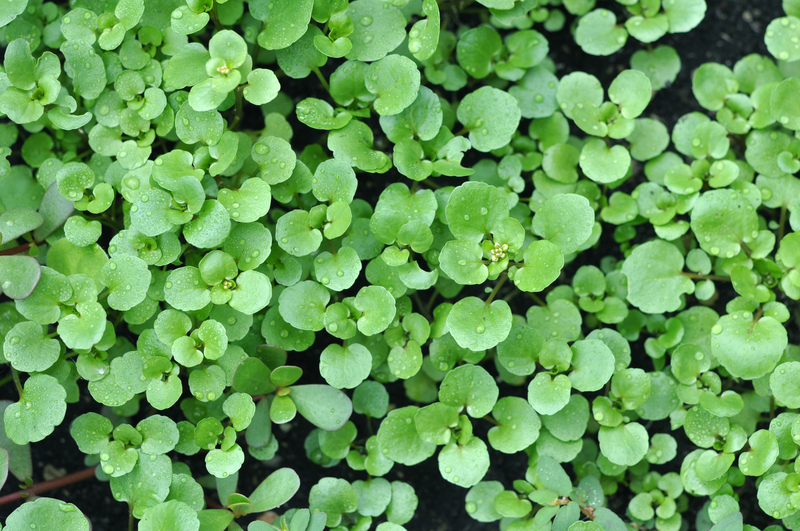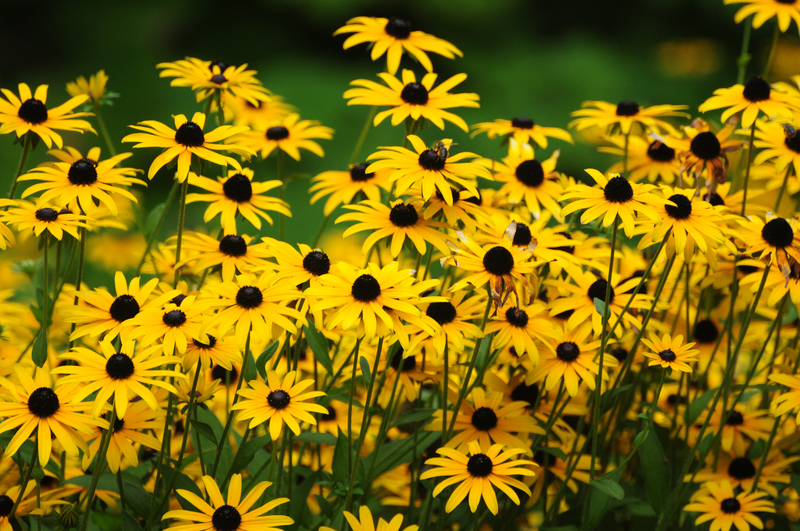Rooted in Joy: Gardening with Dogs in Mind
Posted on 24/05/2025
Rooted in Joy: Gardening with Dogs in Mind
Gardening is a deeply rewarding hobby for many, offering both relaxation and a sense of accomplishment. For dog owners, the desire to create a lush and vibrant outdoor oasis often goes hand-in-hand with ensuring a safe, engaging, and joyful space for their furry companions. Rooted in Joy: Gardening with Dogs in Mind is all about blending botanical beauty with dog-friendly design, so you and your pup can thrive together in your green sanctuary.
Why Create a Dog-Friendly Garden?
Our four-legged friends are part of the family. While gardens can be a delight for humans, they are naturally enticing playgrounds for dogs as well. However, without careful planning, traditional gardens may harbor hazards for pets--like toxic plants, sharp tools, or fragile flower beds.
- Physical Safety: Protecting energetic dogs from harm in the garden is essential.
- Mental Stimulation: Gardens offer sights, smells, and textures to engage your dog's senses.
- Reduce Boredom: Well-designed spaces minimize destructive behaviors bred from boredom.
- Joyful Bonding: Shared time in the garden strengthens bonds between you and your pet.

Planning Your Dog-Friendly Garden
Designing a garden for dogs is as much about creativity as it is about pragmatism. Careful consideration of your dog's habits, breed, and personality will inform your choices from layout to plant selection. Here's how to get started:
Assess Your Dog's Needs and Behaviors
- Size and Energy Level: Large or active breeds may require more space and durable landscaping.
- Digging Habits: Natural diggers will benefit from a designated digging zone or sandpit.
- Chewing Tendencies: Avoid plants and materials that may tempt chewers or pose health risks.
- Marking Behavior: Consider non-porous, easy-to-clean surfaces where marking is likely.
Selecting the Right Dog-Safe Plants
Dog-safe gardening begins with plant selection. Some common garden staples are toxic to dogs. When planning your garden, prioritize pet-friendly varieties, and check plant toxicity lists provided by veterinarians or reputable pet organizations.
- Safe Bets:
- Marigolds (Tagetes spp.)
- Sunflowers (Helianthus annuus)
- Basil (Ocimum basilicum)
- Sage (Salvia officinalis)
- Snapdragons (Antirrhinum majus)
- Avoid:
- Foxglove (Digitalis purpurea)
- Oleander (Nerium oleander)
- Daffodils (Narcissus spp.)
- Tulips (Tulipa spp.)
- Lilies (Lilium spp.)
Building Durable Paths and Play Zones
Dog paths can be both practical and attractive, guiding dog traffic and preventing damage to precious plant beds. Choose materials that stand up to paws and weather.
- Flagstone, mulch, or smooth pebbles are gentle on paws and easy to maintain.
- Grass alternatives like clover or creeping thyme tolerate trampling and dog urine better than many lawns.
- Install barrier plants or low fencing to protect delicate areas.
- Provide an open area for fetch, rolling, or lounging.
Incorporating Enrichment and Engagement
Joyful gardening with dogs isn't just about avoiding hazards - it's about creating an environment where they can thrive. Enrichment activities let them explore, play, and relax.
Sensory Gardens for Dogs
A sensory garden caters to your dog's keen sense of smell and curiosity. Incorporate:
- Aromatic herbs: Lavender, rosemary, and mint offer wonderful natural scents.
- Rustling grasses: Feather reed grass or pampas grass encourage exploration.
- Water features: Bubbling fountains or safe splashing pools provide interest and cooling.
- Safe hiding spots: Tall plants, tunnels, or low shrubs provide shelter and adventure.
DIY Dog Enrichment Features
- Agility obstacles: Simple hurdles, tunnels, or weave poles stimulate mind and body.
- Digging pit: Fill a shallow sandbox with clean sand and bury toys or treats.
- Cool retreat: Set up shaded nooks or dog houses for rest on hot days.
- Balanced terrain: Vary heights and surfaces for a more engaging journey.
Maintenance and Safety Tips for Gardening with Dogs
A garden that's inviting for dogs also needs regular maintenance for maximum safety and enjoyment. Follow these tips:
- Use non-toxic pesticides: Avoid chemical treatments that can harm pets.
- Check for debris: Remove sharp branches, thorns, or potentially toxic mushroom growths regularly.
- Secure compost: Compost piles can be tempting but dangerous due to mold and food scraps. Use closed bins or fencing.
- Supervision: Especially for puppies or new pets, monitor outdoor time until they're familiar with boundaries.
Fertilizers and Mulch: What's Safe?
*Many commercial fertilizers contain additives that are dangerous if ingested. Look for organic, pet-safe options or create homemade compost for your gardening with dogs. Cocoa mulch should always be avoided, as it can be toxic. Try shredded pine or cedar instead.
Pine straw is a safe and attractive mulch widely favored by dog-friendly gardeners.
Design Considerations: Beauty Meets Functionality
Achieving a balance between garden aesthetics and dog comfort is both an art and a science. Thoughtful plant groupings, layered landscaping, and multi-purpose elements can create a harmonious environment.
- Raised beds: Prevent trampling and make garden care easier.
- Decorative fencing: Use low, attractive barriers to shield areas under development.
- Ornamental boulders or logs: Provide interest and natural play structures.
- Visual cues: Different materials or plants help dogs distinguish permitted zones.
Combining Vegetable Gardening with Dogs
Vegetable and herb gardens can co-exist with dogs, but take care. Raised beds or vertical gardens provide access while protecting produce.
- Grow dog-safe snacks such as green beans, carrots, or blueberries for a treat right from the garden.
- Avoid onions, garlic, and chives, which are toxic to dogs.
- Physical barriers help keep dogs' noses (and digging paws) out of sensitive crops.
Minimizing Common Garden Challenges with Dogs
Every dog is different, but common challenges arise in dog-friendly gardening. Solving these with understanding ensures a garden rooted in genuine joy.
Handling Digging
Rather than fighting natural digging behavior, create a dedicated dig zone with soft sand. Hide toys or chews there and reward your dog for using the spot, redirecting when they dig elsewhere.
Protecting Your Lawn from Urine Spots
Dog urine can create brown or yellow patches on lawns. Combat this by:
- Watering affected spots immediately to dilute nitrogen.
- Encouraging dogs to use a specific potty area lined with mulch or gravel.
- Seeding with urine-tolerant grasses like perennial rye, fescue, or clover.
- Feeding a diet that avoids excess protein, if recommended by your vet.
Preventing Escape Artists
Fencing is vital. Opt for sturdy, appropriately high boundaries--ideally at least 4-6 feet depending on breed. Bury fencing a few inches to prevent digging out, and ensure gates are latched securely.
Sharing Joy: Training and Garden Etiquette
A well-mannered dog makes for a more harmonious gardening experience. Basic training can help reinforce garden boundaries and behaviors:
- Use positive reinforcement to teach "leave it," "off," and "stay" in the garden.
- Reward calm behavior around plants and beds.
- Practice supervised recall to prevent lawn zoomies through fragile flower beds.

Rooted in Joy: The Benefits of Gardening with Dogs
When you garden with dogs in mind, you create a space rooted in shared happiness. The health and lifestyle benefits extend to both you and your pup:
- Physical Exercise: Regular outdoor activity supports your dog's fitness--and yours!
- Mental Well-being: Nature's sights and scents calm stress and anxiety for pets and people.
- Stronger Bond: Shared routines and playful interaction deepen trust and friendship.
- Life Lessons: Observing nature together offers opportunities for discovery and learning.
- Joyful Memories: From puppy zoomies to lazy summer dozes, your garden becomes a treasury of joyful moments.
Conclusion: Cultivating a Dog-Friendly Garden, Rooted in Joy
*Gardening with dogs is not just a practical endeavor, but a joyful celebration of the connection between people, pets, and the natural world. By choosing safe plants, designing with dogs' preferences in mind, and maintaining an inviting, hazard-free environment, you create a garden that welcomes all family members--canine and human alike.
As you dig, plant, and play, each moment in your dog-friendly garden nurtures health, happiness, and a partnership rooted in joy. May your outdoor haven flourish and your tails wag as you grow together.

